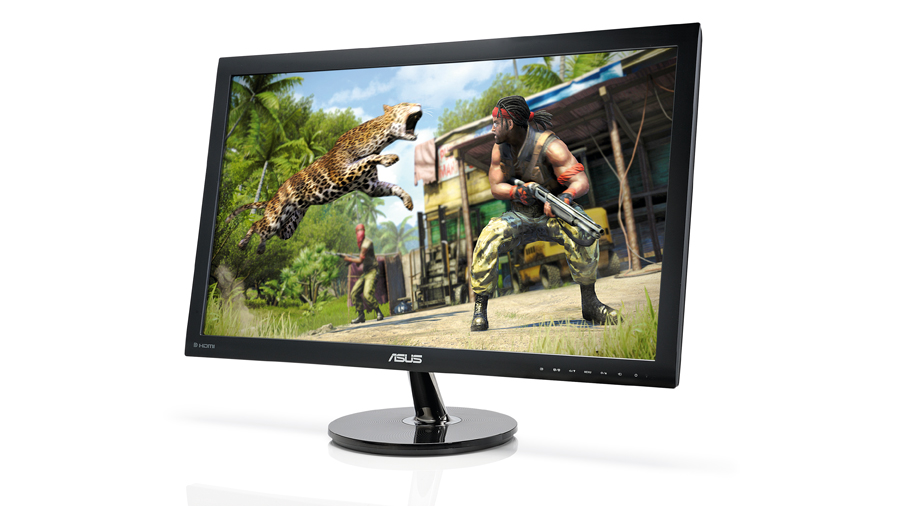TechRadar Verdict
Pros
- +
Decent colour and contrast
- +
1ms response time
Cons
- -
Bad case of the fizzies
- -
Tilt-only stand and lack of DVI input
Why you can trust TechRadar
Spare a thought for your average PC monitor. With tablets and phones making all the tech headlines, they're the forgotten souls of the technology nation. The de facto resolution for high-end smartphones is now 720p HD and 1080p looks like becoming mainstream for tablets, with some devices going higher even than that.
The Retina display on the iPad 3 set the tone here, with its monster 2,048 by 1,536 pixel grid. Now Google has announced the Nexus 10 with its 2,560 x 1,600 10-inch panel. That's a resolution we've previously only seen on high-end 30-inch monster monitors.
In that context, what to make of the new Asus VS278Q and it's 1,920 x 1,080 native? Well, 1080p is standard on even the cheapest 22-inch monitors these days. So while this 27-inch Asus is physically larger, you're not getting anything extra by way of desktop space or visual data.
That's a bad thing as a nice big pixel grid makes all the difference for multi-tasking and for applications like image editing that involve lots of tool bars. And it's just nice to have lots of room to work with - once you're used to the 2,560 x 1,400 pixels offered by some 27-inch monitors 1080p feels quite restrictive.
But hang on, what about games? Now, you could argue that games simply look better at higher resolutions. And that's true so long as you're using the same detail settings and frame rates. But that's easier said than done when you consider that 2,560 x 1,400 has roughly twice the number of pixels to feed as 1,920 x 1,080. More to the point, the in-game visual difference between the two resolutions is relatively subtle.
If we had to choose between 1,920 x 1,080, all the graphics options enabled and super-slick frame rates on the one hand and 2,560 x 1,600, some options disabled and choppy frame rates, we'd take the former.
Gaming grade
That means the Asus VS278Q and its plain-Jane 1080p pixel grid might not be such a dead duck after all. Indeed, with its claimed 1ms pixel response, could it be the perfect gaming tool?
Sadly, the image quality on offer isn't good enough for that. Nor is the overall feature set. For starters, the vertical viewing angles are pretty poor. There's plenty of evidence in our test images of colour compression in brighter tones.
There's some really nasty pixel fizz when rendering certain colours, too. There's always some pixel fizz on TN panels due to the need to use dithering to increase colour depth, but this Asus has a particularly bad case of fizzitus.
That's a shame because the colours and contrast on offer are pretty good. And as you would expect from that 1ms rating, this is one quick panel.
That said, as an out and out gaming panel, the lack of 120Hz support means there's still room for improvement in terms of speed and response.
Elsewhere, the tilt-only stand scores further demerits for its lack of adjustability and its flimsiness. Then there's the lack of DVI input. Okay, you get two HDMI sockets and one DisplayPort. But we'd still like to see DVI.
Technology and cars. Increasingly the twain shall meet. Which is handy, because Jeremy (Twitter) is addicted to both. Long-time tech journalist, former editor of iCar magazine and incumbent car guru for T3 magazine, Jeremy reckons in-car technology is about to go thermonuclear. No, not exploding cars. That would be silly. And dangerous. But rather an explosive period of unprecedented innovation. Enjoy the ride.
